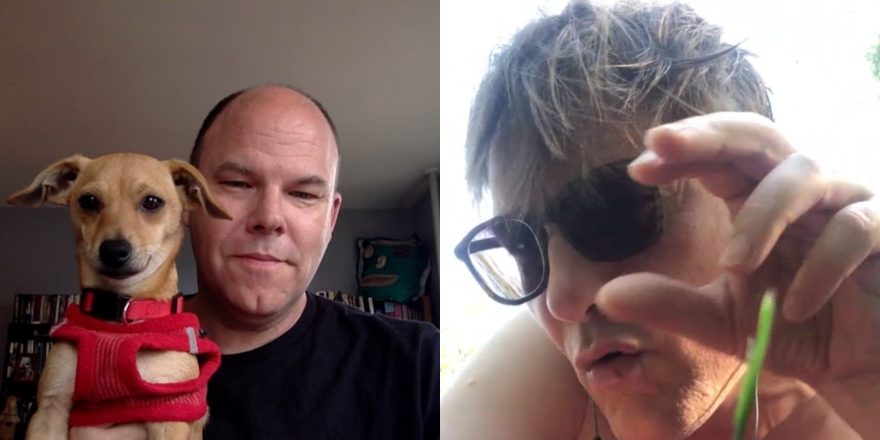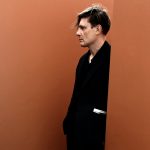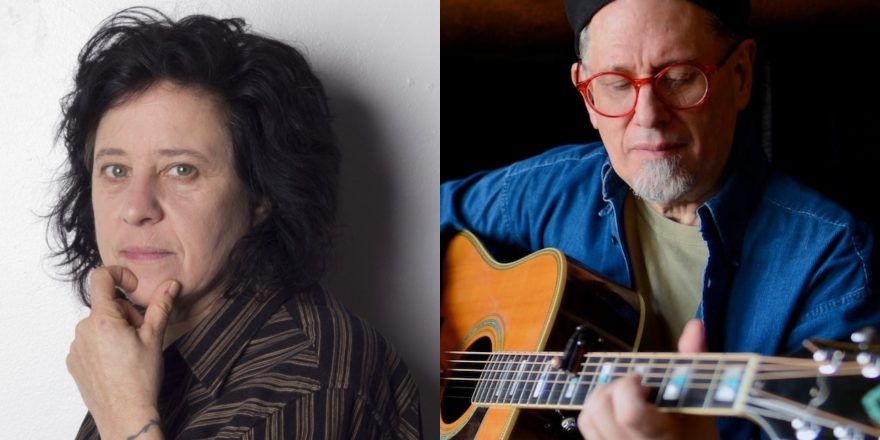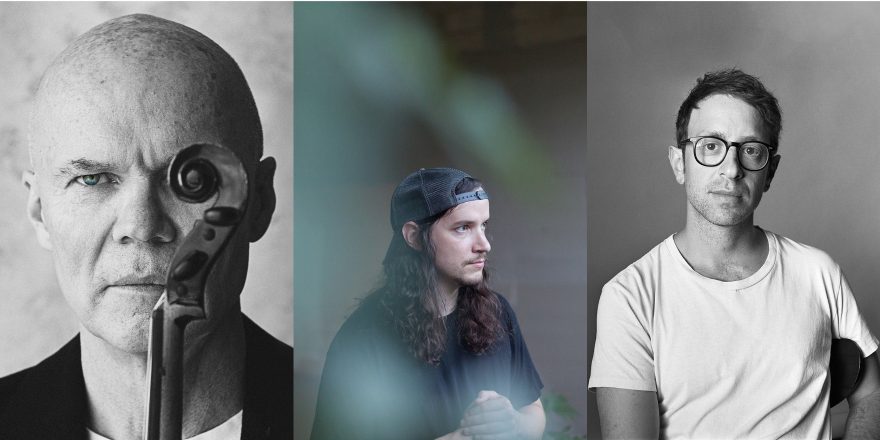Jan St. Werner is a renowned sound artist who’s best known as half of Mouse On Mars. His recent Fiepblatter Catalogue series has expanded St. Werner’s sound and vision; the latest, Glottal Wolpertinger, encompassed a live drone set in Athens with members of The National. David Grubbs is a legendary guitarist and composer (among other things) whose latest solo album, 2017’s Creep Mission, features St. Werner. They spoke by phone.
— Josh Modell, Talkhouse Executive Editor
David Grubbs: So Jan, where are you?
Jan St. Werner: I’m at a public pool in Berlin, in Pankow. Former East Berlin, now pre-gentrified; it’s very family friendly. This pool is one of the largest in Berlin — I don’t know how many square kilometers of green, and then pools. In East Berlin, in the former GDR, it’s pretty amazing, but today’s just so hot. It’s so crowded and I don’t know if you get the soundscape. Planes are landing. I think they’re approaching Tegel, the West Berlin airport, through that route. So once in a while… it’s like it’s a perfect landscape here. And actually they have a bouncer at the entrance of the pool. It’s a bit like Berghain but the opposite because they don’t let the boys in.
David: Are there restrictions about colors that you can wear? In public pools in New York, you can only wear white t-shirts with no writing on them. They’re afraid of gang colors on T-shirts.
Jan: Every second t-shirt here says Rammstein.
David: I just saw [artist] Angela Bulloch a couple of weeks ago, and she just moved to a new studio. I’m trying to remember… either her neighbors were Rammstein or Rammstein are her landlords.
Jan: They’re likely her landlords. I see them in the neighborhood. I don’t know, like, I think they’re pretty pretty good capitalists, but people also like them because their most recent album was kind of critical to Germany. I don’t know, it’s a very ambiguous band.
David: And do you think that that ambiguity is at the center of their success?
Jan: Yeah, because they’re such a consensus band, everyone can project their ideas of radicalism into them, although there is actually zero radicalism. But they do have fun. I watched the documentary with Andi [Toma, of Mouse on Mars], and we were surprised how much fun they had backstage and on stage. I’m sure they had their crises, but you could see there were moments… I was told that they are quite funny, and we have friends who know them. So what about you? What’s what’s the weather like in Brooklyn? What’s the situation like, everything under control? You OK?
David: Yeah. Everything seems to be under control. I was in Greece for a week, and I got back a day and a half ago, and it’s a little overcast today, but there was a real continuity between the weather in Athens and the weather in Brooklyn. I kept thinking like, “Oh, I’m so happy to be in Greece. The weather is so great.” And then I got back here, and it was equally good. I like the hot New York summers. I’m from Louisville, Kentucky which is hot, humid, and polluted in the summer. So all of those qualities that people hate about New York, that’s what I grew up with. And it used to be at least that people would leave New York in the summer. Now, New York is more desirable or people can’t afford to go anywhere, so it’s not as empty as it used to be.
Jan: I can’t stand it. I was in New York during summer. It was really tough for me. Very humid.
David: So let me ask you about your new record.
Jan: Yeah, why not?
David: So we’re up to Fiepblatter Catalogue number six. What kind of arc did you imagine to the series when you started it?
Jan: I was hoping that it would just show me places and take me places. There’s no concept other than giving space to the way things present themselves to me in the room, in life… Since the division between your artistic consciousness and your everyday existence is really sometimes hard to tell. I’m recording ideas or sometimes I write something down or catch something that’s catching my attention. And that new record, really the basis for that was just a simple Reaktor patch.
I made lots of different versions of that sound. And then when I was asked to do something for Documenta [a long running art exhibition], I had a range of ideas. It seemed like that patch would be the key to produce quite a range of different sub-compositions that eventually I would bring together and create one composite piece. So then that became the Documenta project, and after I was done that I was actually fed up with it, and I didn’t really think much about it anymore. But then I got back to and I was really intrigued by the recordings. I had all these modulations and improvisations with that patch, and I had the 45-minute sessions or edits, which I had sent to Documenta, which were broadcast by Documenta radio at different times and actually also terrestrially in different parts of the world. And then there were a few live performances with Aaron and Bryce Dessner, which had also been recorded. And then I thought, that’s a challenge to bring that together and make that a record. That would be a Fiepblatter idea to kind of re-collage that whole collage and make it into something that would hopefully make a nice record, right? I didn’t know if I succeeded in making it a nice record that actually succeeded in re-bringing these pretty disparate parts together and make it into a story.
David: Let me ask you this: I don’t know if these were your words, describing this music as deconstruction or inversion of drone. My own relation to the category of drone… Some of the most revelatory periods in my life were with Gastr del Sol, first playing with Tony Conrad, playing with Phill Niblock, experiencing drone by jumping into the deep end. 20 years later, I don’t really feel that I have anything to say that hasn’t been said or that I haven’t said about drone, and I was wondering why at the present moment you felt an interest in reevaluating drones.
Jan: It’s a good point. I think you’re really good in creating drones and I don’t know exactly what a drone definition is. For me, I don’t think my method is drone by any means. It’s very… unstable. It’s more like a situation of instability. I don’t even want to create stability, I just want to hold on to that tension and constantly juxtapose and compare and be in this oscillating magnetic field. I just realized it’s like I’m herding a bunch of rabbits, and I know they’re now in a field of green, and I’m just hoping that there’s enough grass for them that they would just stay there, and all I’m doing is just watching them and hoping that while I watch them, I provide them with enough grass. And the drone aspect… I mean, there might be a drone element to the kind of odd timing that it all has. You have a few live recordings, which again I cut up. You have studio recordings. I had a studio recordings from Aaron and Bryce, which I reworked. I had the original Documenta frequency bands. We could actually use everything.
David: I’d sort of understood the drone as functioning in there as coordination among the different realizations of it. Like you described, it’s this multi-fragmented composition and with the drone, I get the sense that we’ve entered into another phase of it. The drone is the thing that coordinates the fragments… I just took it to be one of those sign posts that identifies these various fragments as belonging to one composition.
Jan: I’m not even sure if it’s actually one composition. I can just do whatever I like. I can pretend it’s a composition. It probably isn’t even a composition. There’s no criteria that anyone could put on you to tell you what would be right or wrong.
I asked Aaron Dessner if he would want to perform it. We were probably working on the National record and I had that patch, and I said, “Look, I could do so many things with that patch, but none of it would really match your record.” And then the Documenta project came up, and I said, “I made a whole composition with that patch. Would you want to play that show with me?” He said, “Yes, what do you want me to do?” And I said I didn’t care. He just had to listen to that patch or that sound. And you have to find something in it, you have to find comfort, something to relate to. And then Bryce wanted to contribute as well, but he couldn’t come to Athens. I said, “Perfect, just give me some recordings of what you think you want to play.” I would edit it and then just play it back through a single lonely amp in the space, because it’s all a multi-fragmented, multi-channel performance anyway.
We didn’t talk about anything. They just played. And Aaron just played and he looked at me. Sometimes it’s like, uh, do you still want to carry on? Are we done yet? Are we about to be done? And I didn’t know what to tell him. I left it to the curator to give us, like, a kind of cue or a time that we were supposed to play. That piece was by nature endless, and the slice you would get could be different at any time.
David: I think this sense of the unending flow or the unending sound that you tap into or you tune into from time to time—that’s one of the most powerful concepts that attracts people to the experience of and also the idea of a drone. This idea that it’s continuous.
Jan: Yes, but with that piece, it’s continuously changing. You might leave the room and come back and it has changed.
David: That’s one of the things that people find attractive about the experience or the idea of a drone, that it’s continuous and that you tune in every once in a while. Having known Tony Conrad, he was opposed to that conception of it because he associated that with La Monte Young. It’s this kind of imperial gesture of, you know, “I have compositions that last for decades and decades and it’s all me. I started it and it’s endless.” Whereas for Tony, I think that the drone was really about being in charge of your own time. The appealing thing about the drone was wasting time and not having somebody tell you how to use your time.
Jan: Talking about time is very difficult. It seems a very ambiguous concept. In certain philosophical contexts, it seems like we refer to time as a single force, a unit, or a criteria that exists somehow on its own but seems to be flexible. You’re able to play with it. As artists, we can use it in any way we like. But I think the idea of having a space… we could change the idea of space. We could actually change the space itself. We can change not just the perception, but really how we construct space. Obviously, time is a huge factor in that.
I’d like to suggest that the idea for drone is also an expansion or different definition of space in relation to our environment, us in relation to our context, us even in relation to ourselves. I think the concept of time always refers to a certain rebellion against certain physical parameters. As human beings, we cannot deny having to deal with time. We grow older, and there’s linearity to certain actions, cause and effect.
But I’m really attracted by the idea that we live in a collage and that we can actually juxtapose elements, even in something that seems to be droney and microtonal and hardly changing or subtly changing, or suggesting a continuum. But even there you can actually zoom into detail. You can change focus. You can even change perspective. That, to me, is the definition of collage. It’s not necessarily bringing elements together from distant origins and then compiling them and making them stable, making them into an object or an image, you know, but to keep them in flux. And that’s my response to the drone idea.
David: Let me ask you one question, though maybe this throws us back into the discussion of time. We can think spatially or we can think of it in terms of collage. I was thinking about the catalog aspect of the Fiepblatter Catalogue. The black-and-white artwork is suggestive of something that’s complete, as opposed to a more Technicolor Mouse On Mars release — like musically Technicolor and visually Technicolor that suggest the tour yet to come. So I wanted to ask you about releasing records and different strategies for documenting what you do. My sense of the Fiepblatter Catalogue is that it’s an endpoint. You finish something and you document it, kind of quickly. As opposed to a Mouse On Mars record perhaps being the beginning of a new series of collaborations or live performances.
Jan: I think it’s a really nice observation. This series stands in between a few traditions, if there were any for what I’m doing. Of course, there is always a reference. It’s a bit like an electro-acoustic, but an odd electro-acoustic, series. The artwork isn’t selling you anything, it’s not a big record sleeve made for adverts and billboards but I love this wolpertinger artwork by Paul McDevitt and Cornelius Quabek.
But but there are stories on different levels, and what I hope is that people who get it or like it would get back to it. They probably don’t hear it on repeat, but maybe they just hold it dearly.
It’s like you don’t want to go and visit your hometown every two weeks. Sometimes it’s enough to do it like every three years or even once every 10 years. And maybe the Fiepblatter Catalogue could be something like that, something you would like to hold onto.
And maybe eventually the series will be finished and it would be an edition in its own right.
And then again, I’m very happy that Mouse On Mars is something that still perpetuates that band essence. I am very happy to do this with collaborators and extend the band or shrink the band. That freedom is like a gift to me, which I hope can be forwarded. It’s like something’s given to you and you immediately share it, because no one really owns a band.







